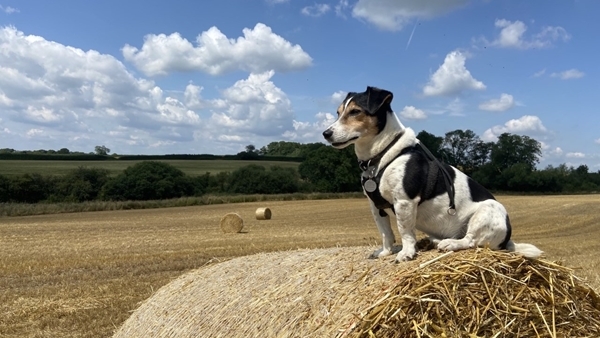
By Joe Stanley, Head of Training and Partnerships at the Allerton Project
This article first appeared in Countryside magazine
4 minute read
2021 may have seen me move to pastures new (and as with so many alliterations, in agriculture this is quite literal) but the farming calendar as I know it has followed me to my new farm at the GWCT’s Allerton Project to provide some comfortable continuity. As such, late July saw the combine roll into the fields to begin harvest 2021 with our farm manager Olly Carrick at the controls.
As with cars, there’s a wide selection of farm machinery brands from which to select. What each farm chooses comes down to a number of factors, from the practical (which brand dealership is nearest?) to the emotional (which brand did grandad use?) to the economical (which brand is best value for money?). Previously, I was almost exclusively familiar with blue New Holland (previously Ford) tractors and yellow New Holland combines; at the Allerton Project I’m still getting used to seeing red Massey Fergusson tractors and a green Claas combine trundling about the place!
Some farmers can be surprisingly passionate about their machinery brand (an emotional state most particularly reserved for John Deere and Fendt owners, I’ve always found) but so long as it does the job (and doesn’t break down) I’m happy.
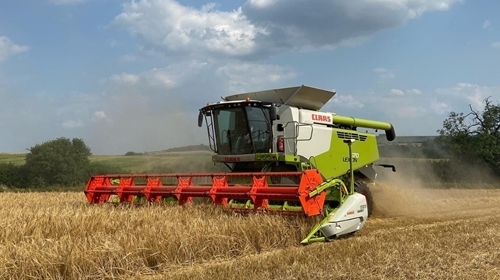
As a relatively small farm operated as a charitable trust, the Allerton Project can’t really justify owning its own combine harvester, which can come with a price tag of anything up to £500,000 these days! When you consider the few days a year it might operate, this is a big outlay. Yet it’s also something which an arable farm can’t do without. The obvious options are to hire one for the summer or to pay contractors to cut your crops for you.
The first can be prohibitively expensive (perhaps £25,000) while the latter puts you even more at the mercy of the weather and when the busy contractor can fit you in. Luckily, Claas are kind enough to lend us a demonstration combine for the summer on the proviso that we let other interested parties in the area trial it as well – this is a huge help to us as a charity, and helps ensure that we have more money available to spend on our research into nature friendly farming.
The scorching week toward the end of July brought our winter barley to full ripeness, and we were able to cut and bale that crop before the positively autumnal conditions of August rolled in, with the straw going to next door’s cattle. Since then, it’s been another challenging harvest across much of the country: the sun has barely shone and heavy showers have peppered the landscape, delaying cutting by twenty-four, then forty-eight, then seventy-two hours and more as combines sit out, water dripping from their cutting knives.
Eventually, crop quality begins to deteriorate and heavy rain and wind can knock ripe, delicate fields flat making the situation worse. The contrast with Europe is stark, where record temperatures have been searing the continent day after day. As is all too familiar in recent years, the spectre of climate change seems to hang over the landscape.
However, by the end of August Olly had managed to harvest our winter barley, winter rape and winter oat crops between the showers. Not possessing a grain drier, we are even more restricted by the moisture content we can cut at: if pushed, I would have previously cut cereals at anything up to 20-22%, but 17% is the maximum at Loddington, with the option only of blowing ambient air through the grain pile in the shed through slats in the floor. To reduce it to the 14% required for storage can take weeks, rather than the hours that I’m used to with a kerosene or gas-burning drier.
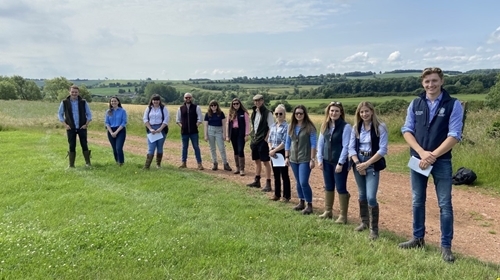
We get a lot of visitors to Loddington to see what we’re doing with nature-friendly farming, but it was particularly good to host two groups of young farmers recently – one from the National Federation of Young Farmers and one from the NFU’s Student and Young Farmer Ambassador’s programme. Of Ted, Toby and I, I think only Toby still qualifies as ‘young’, so it’s always humbling to see the passion and energy of the next generation of farmers at a time of huge change for the industry.
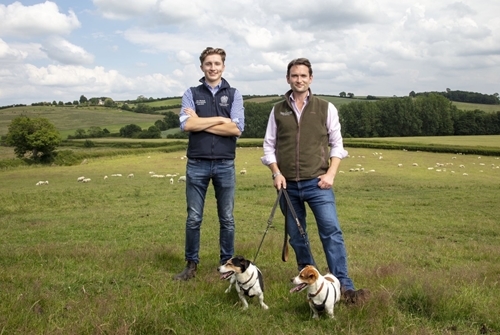
The NFU visit was particularly fun, as they used us as the backdrop for a professional photoshoot for the young ambassadors – into which I managed to insert myself and, more importantly, Ted and Toby. The YA’s do a great job in their twelve-month stint of representing the industry in the media and in person and demonstrating how agriculture is a great career which more people should consider.
Join me again next month, when hopefully I can report harvest complete and some of next year’s crop in the ground (weather permitting…)
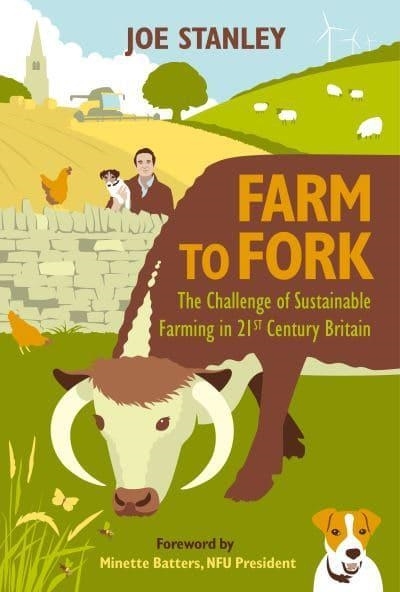
Farm to Fork: The Challenge of Sustainable Farming in 21st Century Britain by Joe Stanley
A wonderfully-detailed and candid account of the life of a British farmer ― of the highs and lows and lessons learned from a lifetime on the land..
VIEW BOOK >
or
BUY BOOK - £18.95 >
100% Secure. All Credit & Debit cards, PayPal, Apple Pay and Google Pay accepted.
